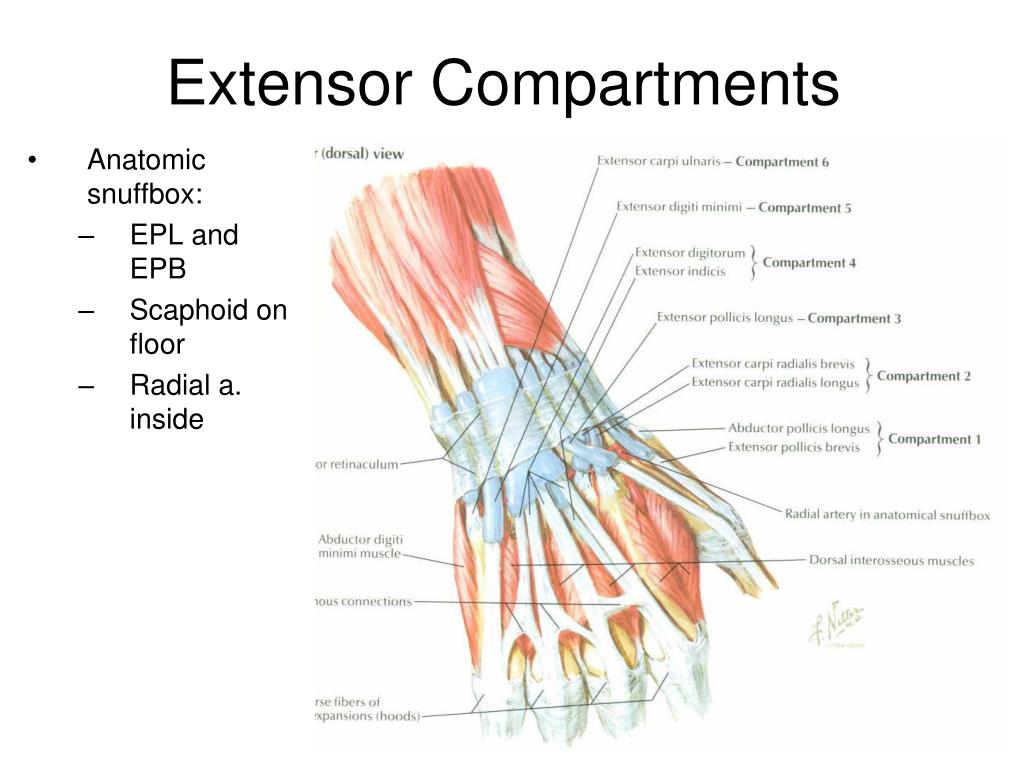
NewYork: Churchill Livingstone 2005.ĭe Quervain's syndrome is characterized by pain in the region of the styloid process of the radius, coming from stenosing tenosynovitis of the tendons of the APL and EPB, in the region of the first dorsal compartment of the wrist. Gray's anatomy: the anatomical basis of medicine and surgery. Standing S, Ellis H, Healy JC, Johnson D, William A. The EPB originates in the distal region of the dorsal surface of the radius and the adjacent interosseous membrane and inserts in the base of the proximal phalanx of the thumb. There, it divides into two portions, which are inserted in the base of the first metacarpal and the base of the trapezium. The APL originates in the proximal region of the dorsal surface of the radius, ulna and interosseous membrane, and it follows an inferolateral path and becomes superficial in the distal region of the forearm. The tendons of the abductor pollicis longus (APL) muscle and extensor pollicis brevis (EPB) muscle are located in the first dorsal compartment of the wrist. Ainda, conclui que os tendões adicionais podem ser efetivamente usados nas cirurgias reconstrutivas e alerta sobre a necessidade de conhecimento das possíveis variações numéricas e posicionais desses tendões, com vistas a planejamentos cirúrgicos mais eficazes.

Em conclusão, a anômala contribuição bilateral do músculo extensor longo do polegar e a fusão muscular atípica, concomitante com um padrão de inserção variante, é o destaque deste relato de caso. No mesmo cadáver foi encontrada a presença dessa contribuição e uma fusão muscular atípica do músculo abdutor longo do polegar (APL) com o extensor curto do polegar (EPB). A anômala contribuição foi encontrada por um tendão auxiliar delgado que cruzou lateralmente sob o retináculo dos extensores, entrou no primeiro compartimento dorsal do punho e fundiu-se com o tendão do músculo extensor curto do polegar. Este relato de caso descreve uma contribuição anômala bilateral do extensor longo do polegar. Na literatura encontram-se inúmeros relatos da presença de múltiplos tendões de inserção no primeiro compartimento dorsal do punho, mas são poucos os relatos que descrevem a ocorrência de fusão e de contribuições musculares. O conhecimento das variações anatômicas dos músculos do primeiro compartimento dorsal do punho é clinicamente relevante na tenossinovite de De Quervain e nas cirurgias reconstrutivas. Furthermore, it is concluded that additional tendons may be effectively used in reconstructive surgeries, but that there is a need for knowledge of the possible numerical and positional variations of these tendons, with a view to making more effective surgical plans. In conclusion, anomalous bilateral contribution of the extensor pollicis longus muscle and atypical muscle fusion, concomitant with a variant insertion pattern, are the highlight of this case report.

In the same cadaver in which this contribution was present, there was atypical muscle fusion of the abductor pollicis longus muscle and extensor pollicis brevis muscle. This anomalous contribution was found through a slender auxiliary tendon that crossed laterally under the extensor retinaculum, entered the first dorsal compartment of the wrist and merged with the tendon of the extensor pollicis brevis muscle. This case report describes an anomalous bilateral contribution of the extensor pollicis longus.

In the literature, there are many reports of the presence of multiple insertion tendons in the first dorsal compartment of the wrist, but few reports describe occurrences of fusion and muscle contributions. Knowledge of the anatomical variations of the muscles of the first dorsal compartments of the wrist is clinically relevant to De Quervain's tenosynovitis and to reconstructive surgeries.


 0 kommentar(er)
0 kommentar(er)
